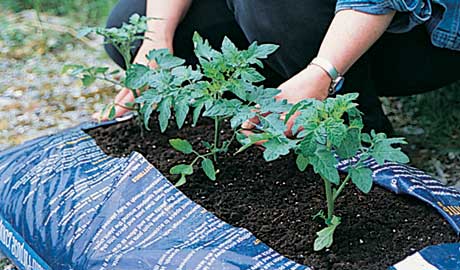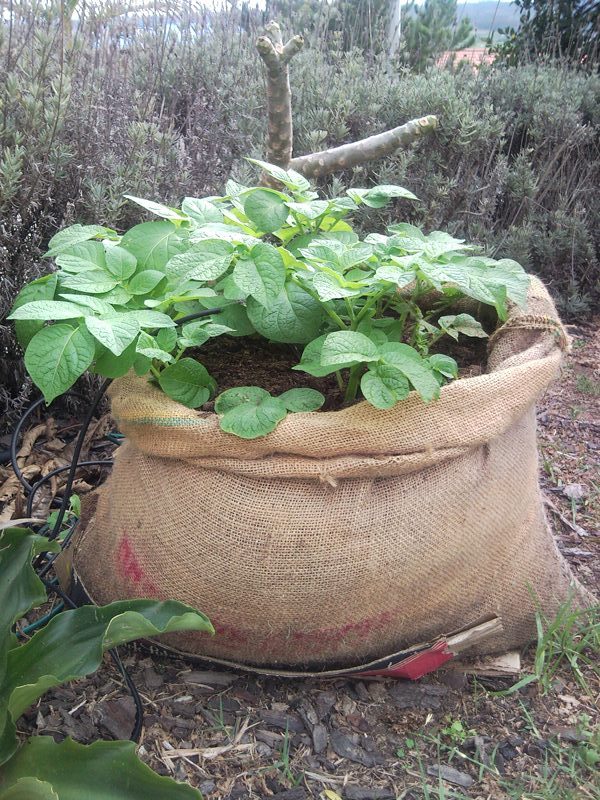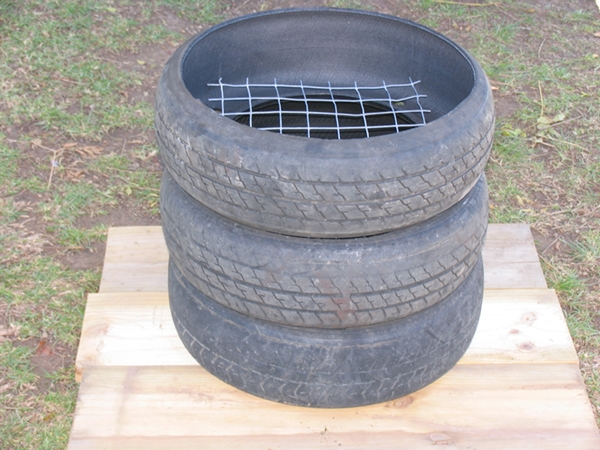
Article 1 (Great Brak Post)
Help! We are killing our planet slowly. The G8 summit held in Italy on 8th of July said that we are heading for the biggest catastrophe mankind has ever seen with major food and water shortages expected.
So, who is to blame? ME and YOU! We will change this and kick global warming in the butt but we need the help of everyone. We need to play our part! We need to start planting trees and lots of them, grow our own veggie gardens and recycle.!
Did you know? Recycling can reduce greenhouse gas emissions by 2 million metric tons of carbon equivalent.
Start your own earthworm farm, recycling all your organic matter (Kitchen scraps; Newspaper etc.) These hard working guys produce the best compost available.
Its called Black Gold! Plants love it. For more info on earthworms go to www.earthwormpower.yolasite.com
Next important matter is water! Start collecting rain water, it’s free? Without the chlorine and other pollutants that ends up in our water ways!! It’s much better for veggies, pot plants and humans? So get that water tank connected to your down pipes, today!
Energy saving is also very important! By saving energy you save money, saving the planet from greenhouse gasses. Did you know that one solar water heater can save the environment up to 3 000 kg of carbon dioxide per year?
For more info on energy saving tips at home go to www.green-energy.yolasite.com and see what U can do to make a difference! Next month we will look at worm farms at home and how to recycle with earthworms :-)
Thanks for reading and remember, the future depends on what we do in the present! Danie Pieterse - Green Energy - 083 459 3944
---------------------------------------------------------------
Article 2 (Great Brak Post)
Composting with Earthworms is great for indoors or outdoor, office or at home. Unless there is something wrong with your worm farm it will also be odor free. By letting worms eat your garbage, you will end up with one of the best soil amendments available - worm castings.
This week we will look at starting an earthworm farm. Try to start your worm farm with at least 1kg of worms. You will need a container or something to keep them in. I use black plastic containers which work well. Drill about 20 evenly spaced 6mm holes at the bottom of the bin and 3mm holes around the top of the bin on all four sides.
Fit the drilled bin into another similar bin to catch the leachate (Worm Pee) which must be diluted 10:1 with water and used within 48 hours to prevent it from going bad (anaerobic). Your worms need bedding before they can start eating your waste, so half fill your top bin with slightly aged horse manure, organic compost or shredded newspaper and cardboard (this should be soaked over night in a bucket of water, then squeezed out and fluffed up before you add it to your bin).
Remember always use rainwater (leaving a bucket of tap water outside for a day or two will remove the chlorine) for your worm farm. Add your worms and start feeding, but never more than the weight of your worms every two days, or at least until you get used to how much they eat. Next week we will talk more about feeding your worms. Your worm bin must be kept covered and in a shady spot.
For more info on worms or purchasing a ready made worm farm, go to www.earthwormpower.yolasite.com You can see a worm farm on display at Leani Nursery (Reebok turnoff).
Thanks for reading and remember the future depends on what we do in the present! Danie Pieterse 083 459 3944 - earthwormpower@gmail.com
----------------------------------------------------------------
Article 3 (Great Brak Post)
Feeding and caring for your worm farm :-)
Keep a small bucket in the kitchen and place your food prep residuals in the bucket. If it has a vented lid which allows air to get in, it will smell less than one that is sealed tight. Vents with screens are best. They keep potential flies out and fruit flies in. Worms will eat almost any pre-plated food that we eat.
They especially like:
Raw vegetable scraps
Fruit scraps and pips
Bread (Mouldy or not)
Used tea leaves/bags
Coffee grounds
Crushed egg shells
Shredded cardboard & newspaper
They don’t particularly like:
Citrus
Meat and fish
Greasy food
Dairy products
Dog/cat faeces
The finer you chop your food for the worms, the easier they can eat it.
Please remember the following;
Worms like to be kept between 13-25 degrees Celsius.
Worms cannot handle bones fats and oils. Worms like to be in a moist environment, not too wet or dry. Keep worms in an environment with minima vibration. White mold is normal in a worm bin and is safe.
Quantity of food will depend on how many worms you have and on the type of food you feed. On average compost worms can eat just over half their body weight in food everyday.
The best method to determine the quantity of food is just to be keeping an eye on your worms and as you see there is only a small amount of food left from the last feed, it is time to feed again.
Over feeding is the biggest mistake most people make. This can quickly turn anaerobic (no oxygen) and this will kill your worms unless there is enough space for them to get away from the food. It also turns your bin acidic witch worms don’t like; this is normally cured just by adding calcium carbonate (agricultural lime) to your bin.
I never feed more than half the bin, the other half is shredded cardboard and newspaper to escape into if food turns sour.
For more info on worms or purchasing a ready made wormfarms www.earthwormpower.yolasite.com or 083 459 3944
Special: R 600 for 1kg of worms + beginners course
Thanks for reading and remember the future depends on what we do in the present!
Danie Pieterse - earthwormpower@gmail.com.
----------------------------------------------------------------
Article 4 (Great Brak Post)
In this issue we will talk more about recycled worm farms and how they work. The Recycled system is cheap, easy for the DIY guy to make and very simple to use. This method does not collect the (worm wee) leachate. The liquid is mostly comprised of the moisture from the food you throw in, and not the worm wee itself. If a liquid fertilizer is required we suggest making compost tea, will be discussed in future articles.
You can start your farm on a raised wooden structure, or any well drained impervious surface, this is to prevent weeds infesting your worm farm. To prepare your tyres you must cut out one wall of the tyre and in the other wall some large drainage holes. A 50 x 50 wire mesh now must be placed on the inside of the tyre. Repeat above steps for all 3 tires.
Setting up your farm, fill one tyre with bedding, place second tyre over the first and feed gradually as in any other worm farm. Continue till you have used all three tyres. Remember the food must fall through the mesh, this only comes in use for harvesting your compost.
Harvesting your compost once well into your third tyre, is simply done by moving the top two tyres away and empting the bottom tyre. Note, these tyres can easily be moved due to the mesh, replace top tyres in order and once bottom tyre is emptied this will be used as the top tyre. This process can now be repeated over and over. Many worms my still be living in the bottom tyre, ignore this as long as you can see the compost is finished, these worms can be removed by light harvesting, which will be discussed later.
For more info on worms or purchasing a ready made worm farm, go to www.earthwormpower.yolasite.com or 083 459 3944 Special: R 600 for 1kg of worms plus beginners course
Thanks for reading and remember Be the change you wish to see in the world :-)
Danie Pieterse - earthwormpower@gmail.com.
------------------------------------------------------------------------------------------
Article 5 (Great Brak Post)
Help Solve the Water Crisis
Many of us don’t think about how much water it takes to do everyday household tasks such as washing a load of laundry or taking a quick shower. But what if fresh water wasn’t so easy to get? According to Live Earth, almost one billion people worldwide live without access to clean, safe drinking water.
Among many factors, pollution from industrial and household contaminants as well as changing weather patterns threatens water supplies globally, while shortages in parts of the Garden Route is becoming a real threat for people living here, we all need to make some changes in the green direction, even if we do just one thing every year.
Invest in rainwater harvesting, they save you money by reducing the amount of clean water you have to buy from the city to water your plants. And they help the environment by reducing the demand for clean water from the city, which requires energy to process. Rainwater tanks are not that expensive and you get them in many different colours to suit your style. Plants love naturally `soft' rain water, which is also free of chlorine and other chemicals. What a nice feeling to know that there will always be backup water for drinking or a veggie garden.
Grey water is wastewater from the bathtub, shower and washing machines that can be treated and recycled for irrigation, toilets, and exterior washing, resulting in water conservation and savings. An inexpensive laundry only system, for watering plants typically costs just a couple of thousand rand and uses at least 15% of your grey water
You can invest in a proper grey water system that will collect all your grey water (200-400L a day) with a pump and float switch installed to automatically empty when full, to be used for the garden or lawn. Grey water units must be emptied daily to prevent bad bacteria from growing. This system will set u back between R6 000.00 and R10 000.00 (all depends on installation and needs) and is worth every penny. For more info on rainwater collection or grey water systems go to www.groen-energie.net
Thanks for reading and remember Be the change you wish to see in the world :)
Danie Pieterse – danie@groen-energie.net
------------------------------------------------------------------------------------------
Article 6(Great Brak Post)
Grow your own organic vegetables in your backyard (Green Living)
Why buy supermarket veggies when you can grow tomatoes in your sunny apartment window or potatoes in your backyard? Homegrown organic vegetables can’t be beat: for taste, nutrition, environmental benefits—and saving money
Growing your own is the most natural thing in the world to do. You just need land and the will to grow stuff on it.
The Benefits
Being out in the veggie patch and getting exercise is health bringing in itself.
Organic farming and vegetable growing is sustainable.
Higher nutrient content of the vegetables means a healthier diet.
Seeing your crops grow from seeds to full maturity gives you an amazing sense of satisfaction and achievement.
My Urban Veggie Garden was born with the desire for all of us to eat from our own garden and provide people with the basic information to start doing so. Installing a veggie garden which is easy to maintain is the first step in becoming self sufficient. Growing your own food helps: Reducing our contributions to climate change - by reducing miles food travels to reach the supermarket. Water Efficiency - Home grown food has been shown to be more water efficient than broad scale agriculture - Fresh, nutritious, chemical free food - Community Health and Social benefits - Growing food encourages children to eat fruit and vegetables. Tackles childhood obesity in a health active outdoor activity for the whole family. With the creation of Moms recycled Veggie Garden I wish to pass on some of my knowledge and to help people succeed in growing their own food. I offer a quick, effective and very reliable service, including bed building, composting, mulching, soil importing, and drip irrigation we also do rainwater harvesting and grey water systems for more info go to www.groen-energie.net or danie@groen-energie.net
Why Compost?
I recently read somewhere that by adding just one decent amount of compost to your garden’s soil, you are adding as much topsoil as it would take nature a century to accumulate! If you can get compost earthworms to do the compost job for you even better.
Thanks for reading and remember “Be the change you want to see in the world”, Danie Pieterse 083 459 3944
................................................................................................................
Article 7(Great Brak Post)
Grow vegetables in a bag of compost

|
A simple yet effective method of growing vegetables from seedlings in a bag of potting soil or compost, which can be placed in a convenient position on a sunny patio or in the garden. This is a great project for children. ITEMS REQUIRED - A bag of potting soil or compost, a tray of seedlings e.g. lettuce; sharp knife; watering can. |
|
STEP 1 - Lay the bag on flat surface and smooth it out, preferably in its permanent position. Draw 9 circles on the top of the bag, as one has the option of growing 9 plants depending on the size of the mature plants. We have chosen lettuce seedlings and will only use the outer 6 holes. For tomatoes, which will grow much bigger, use only the centre 3 holes for example. STEP 2 - Using a sharp knife, cut a "cross" through each circle where a seedling will be planted. STEP 3 - Fold the plastic flaps in each "cut circle" underneath to make an opening that reveals the soil. Make a little hole in the soil in each opening, and transplant the seedlings into the bag. STEP 4 - Water the seedlings with a watering can being careful not to over-water. The bag will retain a lot of moisture so it is not necessary to water all that often. If the bag is exposed to a lot of rain, it is important to make slits in the sides to allow water to escape. Remember it is likely that too much water will kill the plants rather than too little. The amount of nutrients in the potting soil or compost will sustain the plants until maturity, and no extra feeding is required. Once the lettuce is mature, harvest the leaves as required, and when the plants are totally spent, slit open the bag and empty the entire contents onto the compost heap. Join 24781 South Africans that will plant something on 20 March 2010, Green Energy is joining them, more info on planting season at www.earthwormpower.yolasite.com All previous articles also available on my site. Thanks for reading and remember “Be the change you want to see in the world”, Danie Pieterse When you've finished reading this weeks issue, please be sure to send us your feedback. We would love to hear your thoughts on living green J danie@groen-energie.net |
|
.....................................................................................................................................................
Article 8(Great Brak Post)
Top 10 Things You Can Do to Reduce Global Warming
Do your part to reduce waste by choosing reusable products instead of disposables and start recycling your own waste.
Adding insulation to your walls and attic, and installing weather stripping or caulking around doors and windows can lower your heating costs more than 25 percent, by reducing the amount of energy you need to heat and cool your home.
Wherever practical, replace regular light bulbs with compact fluorescent light (CFL) bulbs. CFLs also last 10 times longer than incandescent bulbs, use two-thirds less energy, and give off 70 percent less heat.
Less driving means fewer emissions. Besides saving gasoline, walking and biking are great forms of exercise.
5. Buy Energy-Efficient Products
When it's time to buy a new car, choose one that offers good gas mileage. Home appliances now come in a range of energy-efficient models.
6. Use Less Hot Water
Set your water heater at 55 degrees to save energy, and wrap it in an insulating blanket if it is more than 5 years old.
7. Use the "Off" Switch
Save electricity and reduce global warming by turning off lights when you leave a room. And remember to turn off your television, video player, stereo and computer when you're not using them.
8. Plant a Tree
If you have the means to plant a tree, start digging. During photosynthesis, trees and other plants absorb carbon dioxide and give off oxygen.
9. Make use of natural resources
Wind and Solar power can be installed to save energy; biogas (methane) from waste is another amazing concept.
10. Encourage Others to Conserve
Share information about recycling and energy conservation with your friends, neighbors and co-workers, and take opportunities to encourage public officials to establish programs and policies that are good for the environment.
These 10 steps will take you a long way toward reducing your energy use and your monthly budget. And less energy use means less dependence on the fossil fuels that create greenhouse gases and contribute to global warming.
Thanks for reading and remember “Be the change you want to see in the world” Please send your thoughts, I would love to hear from you J
danie@groen-energie.net
..............................................................................................................
Article 9(Great Brak Post)
Grow potatoes with the bag container method.
Container gardening gives you the ability to grow a range of fresh vegetables with little space. Use container methods on apartment patios and balconies, in a sunny spot in front of the house, or anywhere else that is difficult to create a traditional garden bed. Potatoes are a successful and plentiful food crop that is suited to container methods. Unlike other vegetables that require a pot, potato crops can be grown right in a bag.

Things you will need:
- Seed potatoes
- 50 Kg bag of compost
- Utility knife
Instructions:
You can use the tyre method or you can make use of a bag any bag but an old Hessian bag works best
Step 1 Cut off the top of a 75-pound bag of compost using a utility knife without damaging the rest of the bag. Empty the compost into a bucket or box.
Step 2 Roll the top of the bag down approximately halfway. Place a 2-inch layer of compost back into the bag.
Step 3 Place two to three seed potatoes on top of the compost layer. Cover the seed potatoes with 3 inches of compost and water, then place in a sunny location.
Step 4 Cover the shoots with compost when they emerge in three to seven days. Continue adding more compost and unrolling the bag to support it each time the shoots become visible.
Step 5 Stop adding compost once the bag is full and leave the potatoes to mature. Keep the soil moist.
Step 6 Harvest when the leaves and flowers begin to die off---approximately 100 days after planting. Empty the bag on a tarp and sift through the compost for the potatoes.
Thanks for reading and remember “Be the change you want to see in the world” Please send your thoughts, I would love to hear from you :-)
danie@groen-energie.net
..............................................................................................................
Article 9(Great Brak Post)
(Farming with nature)
The processes whereby the plant kingdom works with you to create the garden.
HERBS
Certain herbs and plants have a growth and positive effect on each
other---another good reason for planting herbs in the garden.
Some herbs repel and confuse pests--others attract predators, which help naturally to keep the pest population under control--for e.g. wilde dagga, [leonotus leonurus], Katstertjie [bulbine fructesens] and honeysuckle [lonicera periclymenum] attract small birds, which feed on larvae, and lavender repels moths.
Another way of enhancing plant growth in the garden is to plant physically complementary plants together--e.g. corn and peas--the corn supports the peas and the peas fix nitrogen in the soil.
FERTILIZING
Use organic fertilizer or compost, it enhances the soil whereas chemical fertilizer has a negative effect on the soil.
Some vegetables when left to go to seed repel weeds and their root system aerates the soil e.g.-radish, mustard and cabbage.
CROP ROTATION
Planting the same crops in
the same
area for years can increase the likelihood of disease.
Overcome this by continual crop rotation and permanent beds of herbs.
The medical uses of the herb are not only for the benefit of man but for the
plant kingdom too.
SNAILS AND SLUGS
I find that when I plant a mini hedge of katstertjie [ bulbine fructesens] or
wild garlic [tulbaghia violacia], snails tend to gravitate to that area and
come out in the evening to congregate. The leaves are longish and spiky and
quite fat and the snails seem to like that bushy space they make .the plants
grow thickly and the cool is snail land.
This is not ideal but it keeps the snails from going into the tender areas of the garden. Snails are notoriously fond of beer. Put out some beer in a tin at soil level, they usually drink thereof and getting drunk --fall in and drown---not exactly the Buddhist way.
I believe oak mulch helps to keep them away, never tried it myself though...
Salt has an immediate effect on snails but you have to hit your target---try not to spill much salt in the growing area.
For more info go to www.herbsorganic.co.za
Thanks for reading and remember “Be the change you want to see in the world” Please send your thoughts, I would love to hear from you J
danie@groen-energie.net
............................................................................................................
